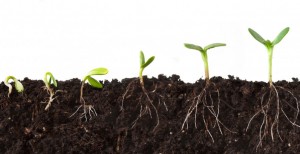Why We Suffer Through Change: Lessons for the Leader
“The only way to make sense out of change is to plunge into it, move with it, and join the dance. ” ~ Alan Watts
Why is change so hard? Our world is filled with so much change these days. We are experiencing more change in a year than past generations have experienced in their lifetimes. From technology, healthcare, career and personal life, we are surrounded by change. People are changing. Companies are changing. What was the gold standard, is sometimes now the ghost town standard. Have you been to a Sears store lately? New jobs are being created every day. Laws are changing. Politics, heck, even the world’s weather is shifting! Change is all around us and yet, we still suffer through change. Why is change so hard? Perhaps the better question is what do we do to add to our suffering through change?
When we change, then something about us is different. Change requires a shift. It can be a shift in how we behave, how we see ourselves, how we see others, what we accept about ourselves or how we define our relationships with others. The suffering comes from resisting the change. But what is it that we are actually resisting? Often we are changing into or towards something much better. It could be a promotion, new skill, new house, new company, added responsibility or a new relationship. Maybe we take on the new job, house, relationship or identity and are excited about it.
But here is where the suffering comes in. What we often try to do (and I am not beyond any of these behaviors), is try and change while also staying the same. That point is so huge that I want to repeat it, in writing. We try and change while also staying the same. It’s like we want to keep all the good things about what we were before the change, while just adding the new stuff. Or maybe I can just quietly be the previous me, do the previous stuff, and nobody will notice while I also just do some of this other new stuff. New and improved? There is no such thing. New is new and improved is improved. We cannot be two things at once, especially when one thing is contrary to the other and that contradiction is where the suffering lies. We all have been promoted at some point to a new job only to check in on how the new person performing our old job is doing or keeping in touch with who is in our old job. Maybe we even hold on to some of our old roles because we really liked them under the pretense of “easing” in the new person or transitioning a former client or business partner. If you straddle the stream, you’re nowhere. Of course we need bridges to get from one place to the next. Bridges, however, are for crossing; not for living on.

You must take personal responsibility. You cannot change the circumstances, the seasons, or the wind, but you can change yourself. That is something you have charge of. ~ Jim Rohn
I am not suggesting that you abandon all of yourself and your needs in order to grow, nor am I suggesting that you abandon all previous lessons, relationships or behaviors. Some behaviors or actions, or beliefs, will have to go. Change requires a loss. If there is not a loss, then there is not change.
- To become an adult, you must let go of being a child.
- To become a leader, you must let go of behaving like a victim.
- To manage others, you have to let go of doing it all yourself.
- To take risks, you must let go of your attachment to safety.
- To become successful, you must lose your limiting self- beliefs.
- To love yourself, requires letting go of the unlovable story.
- To see yourself one way, requires accepting the loss of your old way.
- To become single is to lose your identity as partnered.
- To become married is to lose your complete autonomy as a single person.
Water cannot be ice and steam at the same time and neither can you. Nature understands these laws. A tree must let go of being a seed in order to become a tree. 
Before you can truly embrace a change, ask yourself these questions. In order to become what’s next, what must I let go of? What loss must happen? What loss must I acknowledge? What behaviors must go? What old story or self belief should I no longer authorize? Grieve the loss then make room for what is truly new and your future you. Nature knows when to let go of “what was” in order to become “what’s next”. So can you.
Thank you for reading this article. I welcome you to share it with colleagues and friends and especially anybody that may be working through a change.
I am sending you lots of positive energy and best wishes for great success.
Your coach, fan and friend,
Larysa
Larysa Slobodian, MA
Principal Consultant & Executive Coach


Oh, brother. You named the unbearable tension that we experience – wanting to change and stay the same. Thanks for the reminder that this isn’t possible so I can get on with really making the shift.
Great insights Larysa. As author Ron Heifetz says: people don’t resist change, they resist loss.
Indeed Sabina. We especially resist losing things that could result in pain, or loss of control, identity, status, and the list goes on – especially for me
Thank you Pam. You named it well- an unbearable tension, hence the suffering. Thank you for reading and for your comment.
I absolutely resist change, and yet we need to embrace it (or resist it less…) to grow. Thinking of change as a dance – a necessary dance, at that – helps me wrap my head around the grief/loss piece. Dancing with grief/loss in order to grow, sounds more inviting and survivable. Thank you for the article. Well timed, as always.
After reading your article, it has been interesting to see the desire to change and stay the same showing up in areas of my life.I appreciate how you’ve illustrated change in such a tangible way. Thank you.
Thank you. Thanks for reading.
Keep dancing Lisa! Thank you for reading and for commenting. I will keep dancing too.
Your article is timely – so much change occurring in my life right now. This helped put things in perspective!
Hi Ray! I’m really happy to hear that you found the article timely. It’s always good to hear from you. I hope you are well.
Larysa, You nail it. I use quite a bit of Kegan and Lahey’s approaches from their books An Everyone Culture and Immunity to Change. You bring to life what they say in such a dry way. Plus, you add much more – I love your “bridges are for crossing, not living on”. Thank you, as always, for sharing and giving of yourself. Peter
Thank you Larysa!
Thank you Ruth!!!
Thank you for sharing and for reading Peter! Those bridges can get super comfy
Hope you are well and making great change happen outthere.